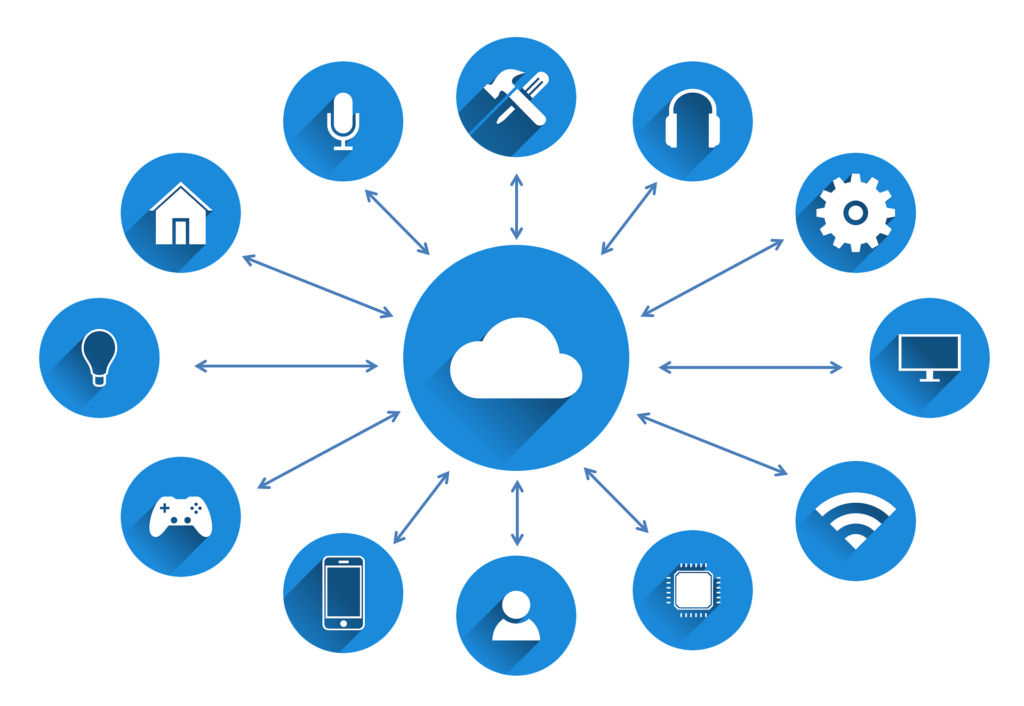Banking and Finance have had a mixed relationship with technology. Whilst some financial institutions are keenly focussed on integrating technological trends thanks to an eye for innovation and profit margin, banks can be bulky institutions and sometimes have a hard time adapting to technological advancements.
Enter: the IoT (Internet of Things). This term refers to the interconnectivity of everyday devices which can become automated to gather and share vast amounts of data. The IoT is going to be causing considerable upheaval in fintech over the next few years – Digital Business Insider estimates that banking’s IT budget will have grown by almost 15% by 2021. Let’s take a look at where IoT will impact financial institutions the most.
Changing The Way We Pay
If the IoT is about any one thing, that’s data. Traditionally, financial institutions have expended huge energy gathering data as it makes customers more predictable and reduces the financial risks associated with investing. Whereas ten years ago cash was the overwhelmingly dominant form of payment – and banks had little decisive way of understanding what customers did with it after withdrawing it from ATMs.
The trajectory of card payments, then contactless gave banks more data about customer spending. Now, the IoT is revolutionizing payments once more. Thanks to smart devices, customers are increasingly incentivized to pay through their technological accessories – phones, watches and even your sunglasses. Fintech needs to keep up with this trend, offering customers multiple payment options and leveraging the data thus gathered.
Optimized Customer Service
Banking institutions have long been battling it out in the marketplace to offer consumers the best customer service. AI and the IoT present enormous opportunities for financial industries to connect with their customers on multiple levels.Firstly, customer service can be personalized in new ways thanks to the data that banks will have fathered on their customers. Banks can offer new services of tailored financial advice, automatically built from customer spending data. Secondly, AI is powering automated customer service which allows banks to offer 24/7 service. Chatbots allowed one bank to increase chat hours over 300%, at limited cost.
Smart Branches
The IoT is going to enable the physical infrastructure of banking – branches and ATMs, for example, to be imbued with technology that changes the way fintech industries interact with their customers. For example, customers can be welcomed into physical branches by digital messages the minute they enter the building, with prompts for their questions and needs on that day.
Creating a level of interconnection between customers and banking infrastructure will strengthen customer experience, feeding back into loyalty and retention.
Risk Assessment
Many financial institutions are in the business of risk. From high-level finance and investment banking to insurance providers, assessing, managing and eliminating risk is an integral component in their business model. This has traditionally been a laborious actuarial process, but the data-gathering enabled by IoT can combine with AI and machine learning processes to automate and streamline a good deal of this risk management.
A real-world example of this is already taking place with the introduction of “black boxes” into the repertoire of vehicle insurers. By accumulating driver data, insurers can make more accurate decisions, reduce costs and appeal to new customers with personalized quotes.
Security and Authentication
IoT is proving a game changer in security and authentication as biometric technology enables top-tier security. Facial recognition and thumbprint unlocking has been being implemented into smart devices such as iPhones for a number of years and fintech industries can introduce these applications to allow IoT enabled smartphone apps to release funds at the press of a button.
As customers become accustomed to technology providing streamlined experiences the lesser they will tolerate remembering multiple passwords and clunky authentication methods. Fintech can jump onboard biometric authentication as an opportunity for providing effortless customer experience.
Change Is Coming
Institutions operating in the fintech industry need to adapt to the IoT in a number of ways. An influx of data requires innovative data management systems without which banks will be missing opportunities to optimize their systems. The IoT and AI are going to prove invaluable to fintech in the coming years, it’s a whole pocketful of change.
Katherine Rundell is a technology journalist at Academized. She writes about the new trends in information technology, unravelling this ever-changing landscape into real terms for organizations to understand.
